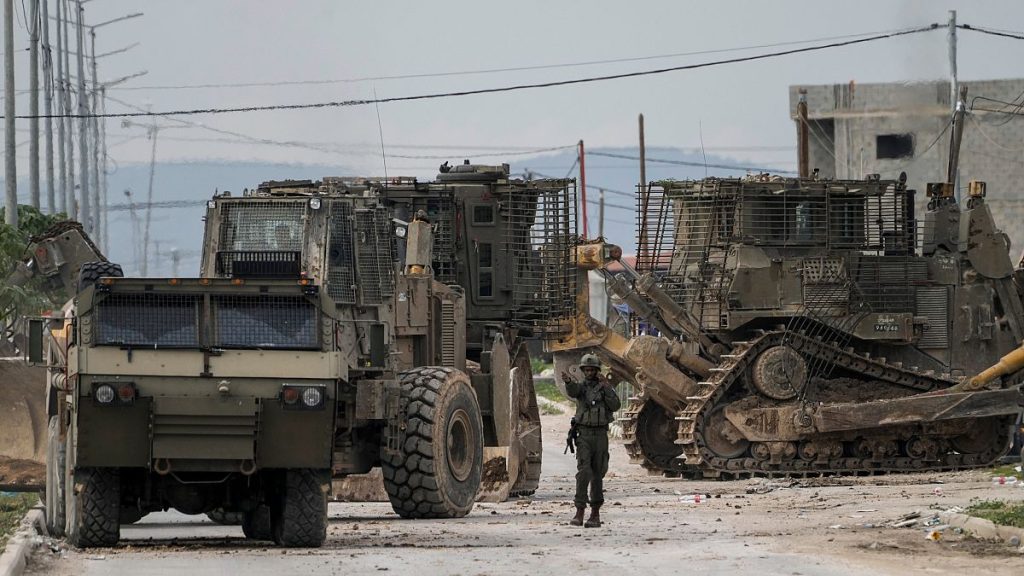The fragile ceasefire established in Gaza offered a momentary respite, yet the specter of violence continues to haunt the occupied West Bank. Even as Gazans tentatively returned to their homes under the agreed-upon truce and hostage exchange, Israeli forces launched a significant military operation in Jenin, a city in the northern West Bank known for its resistance to Israeli occupation. The operation, coupled with reported attacks by Israeli settlers on Palestinian towns, underscores the volatile nature of the region and the deep-seated tensions that persist despite the ceasefire’s implementation. The Israeli military’s actions in Jenin have been described by local authorities as particularly severe, raising concerns about the potential for escalating conflict and humanitarian crisis.
The Israeli military reported killing two Palestinian militants in Burqin, a village in the West Bank. They claimed the individuals were responsible for a previous bus attack that resulted in fatalities and injuries. Hamas, the militant group that controls Gaza, confirmed the two men were members of its armed wing and praised the earlier bus attack. This incident highlights the cyclical nature of violence in the region, with attacks and retaliations fueling an ongoing conflict. The timing of the operation, coming so soon after the Gaza ceasefire, suggests the deep divisions and ongoing tensions that remain. The precariousness of the situation is further exacerbated by the political pressures faced by Israeli Prime Minister Benjamin Netanyahu from his right-wing allies, who may view the ceasefire and prisoner exchange as a sign of weakness.
Adding to the complexity of the situation are reports of increased settler violence in the West Bank. Israeli settlers, often ideologically driven and residing in settlements considered illegal under international law, have a history of clashes with Palestinians. These attacks, ranging from property damage to physical violence, further inflame tensions and undermine efforts towards peace. The ongoing expansion of settlements, viewed by Palestinians as a deliberate attempt to annex their land, fuels resentment and deepens the divide between the two sides. The international community largely condemns these settlements as illegal, but their growth continues, contributing to the volatile environment.
The recent resurgence of violence comes amid a shift in US policy under the newly inaugurated President Donald Trump. Trump reversed sanctions imposed by the previous administration against Israelis accused of violence in the occupied territories. These sanctions had targeted individuals and entities involved in settler violence and illegal land seizures. The reversal of these sanctions signals a potential shift in US policy toward the Israeli-Palestinian conflict, which could embolden those engaging in violence and further complicate efforts to achieve a lasting peace. This move by the Trump administration is likely to be met with criticism from human rights groups and those advocating for a two-state solution.
The broader context of the Israeli-Palestinian conflict is essential to understanding the current situation. The Israeli occupation of the West Bank, including East Jerusalem, since the 1967 war, remains a central point of contention. Palestinians aspire to an independent state in these territories, while Israel maintains control and continues to expand settlements. The status of Jerusalem, a holy city for both Jews and Muslims, is another major obstacle to peace. The ongoing construction of the separation barrier, which Israel claims is for security reasons but which Palestinians view as a land grab, further exacerbates tensions.
The recurring cycle of violence, fueled by political and ideological divisions, underscores the urgent need for a comprehensive and sustainable peace process. The deep-seated mistrust between Israelis and Palestinians, the complex political landscape, and the involvement of external actors all contribute to the challenge of achieving a lasting resolution. The international community continues to call for a two-state solution based on the 1967 borders, but significant obstacles remain. The recent events in the West Bank highlight the fragility of the situation and the need for renewed efforts to address the underlying causes of the conflict. The future of the region hinges on the ability of both sides to engage in meaningful dialogue and find a path towards peaceful coexistence. Without a concerted effort to break the cycle of violence, the prospects for a just and lasting peace remain dim.














